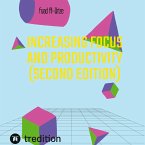The purpose of this research was to evaluate contextual factors affecting labourproductivity on construction projects, and whether these factors differ based onconstruction projects, company or location. According to a report by McKinsey GlobalInstitute (MGI) (2017), globally, the construction industry accounts for 13% of theGross Domestic Product (GDP) and employs 7% of the world's working population,making the construction industry one of the leading contributors to GDP (PWC, 2016;Barbosa et al., 2017; StatsSA, 2017). Barbosa et al. (2017) said that in the past 20 yearsthe construction industry has had a 1% annual productivity growth globally.Durdyev and Mbachu (2011) argue that productivity outside of the contextualdefinition and clarity of the construction project's objectives is a complicated conceptto understand. Construction and labour productivity are described as output obtaineddivided by input expended by Tran and Tookey (2011) and the Organisation forEconomic Cooperation and Development ([OECD] 2011) respectively. While theBuilding and Construction Sector Productivity Taskforce (BCSPT) expand on this notingthat productivity is the construction industry's ability to convert inputs into outputs(BCSPT, 2009).Whiteside (2006) proposes that labour productivity is the output average of directlabour hours to install a unit of material. However, Allmon et al. (2000) argue thatlabour productivity can only be defined when an organisation or the project hasidentified the base or norm of what constitutes labour productivity. This study agreeswith the proposition raised by Allmon et al. (2000) because logically a base or normwill be required to know whether labour is productive or not. It follows that if aconstruction project commences without clarity on the expectation level ofproductivity or a standard for efficient labour productivity, there will be no knowledgeof how the project has performed.Throughout literature, different scholars view labour productivity as one of the factorshaving a significant influence on construction productivity (Makulsawatudom et al.,2004; Enshassi et al., 2007; Jarkas and Bitar, 2012; Jarkas, 2015; Okorafor et al., 2016).Lim (1995) argues that labour productivity is amongst 17 factors found to impactproject productivity, while Hughes and Thorpe (2014), found labour productivity to beamongst the 15 listed factors affecting project productivity.
Bitte wählen Sie Ihr Anliegen aus.
Rechnungen
Retourenschein anfordern
Bestellstatus
Storno









